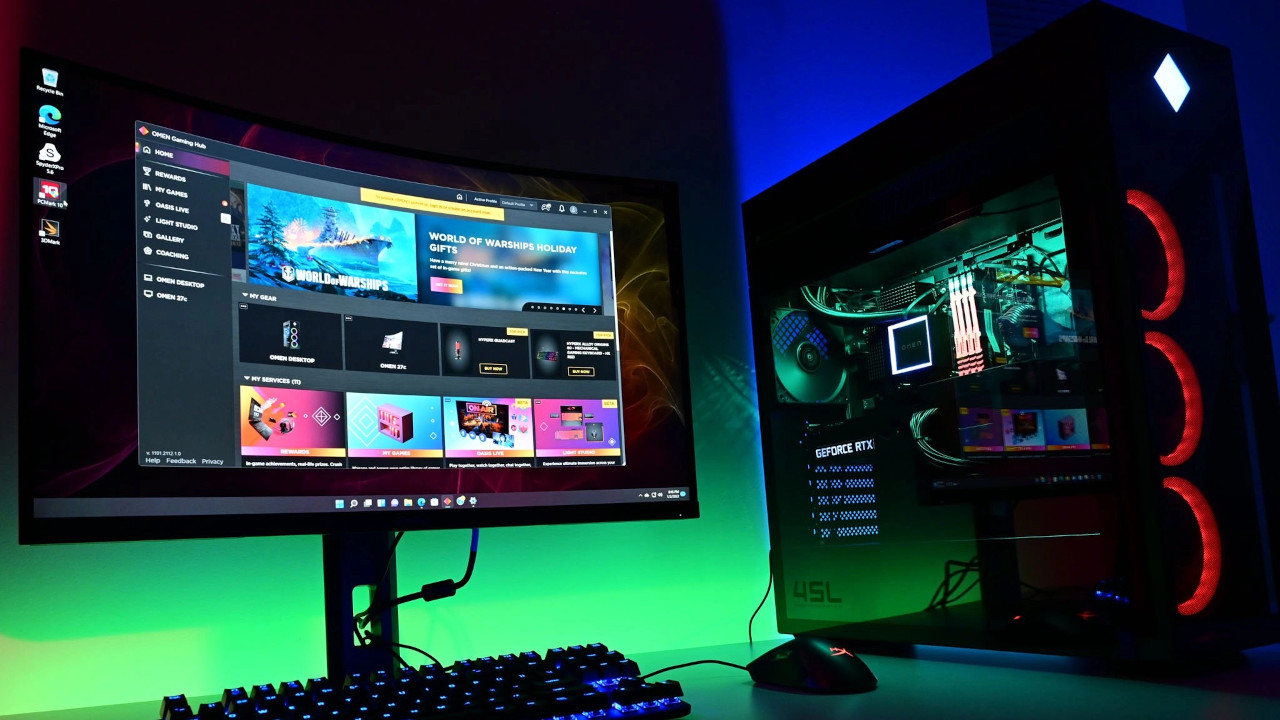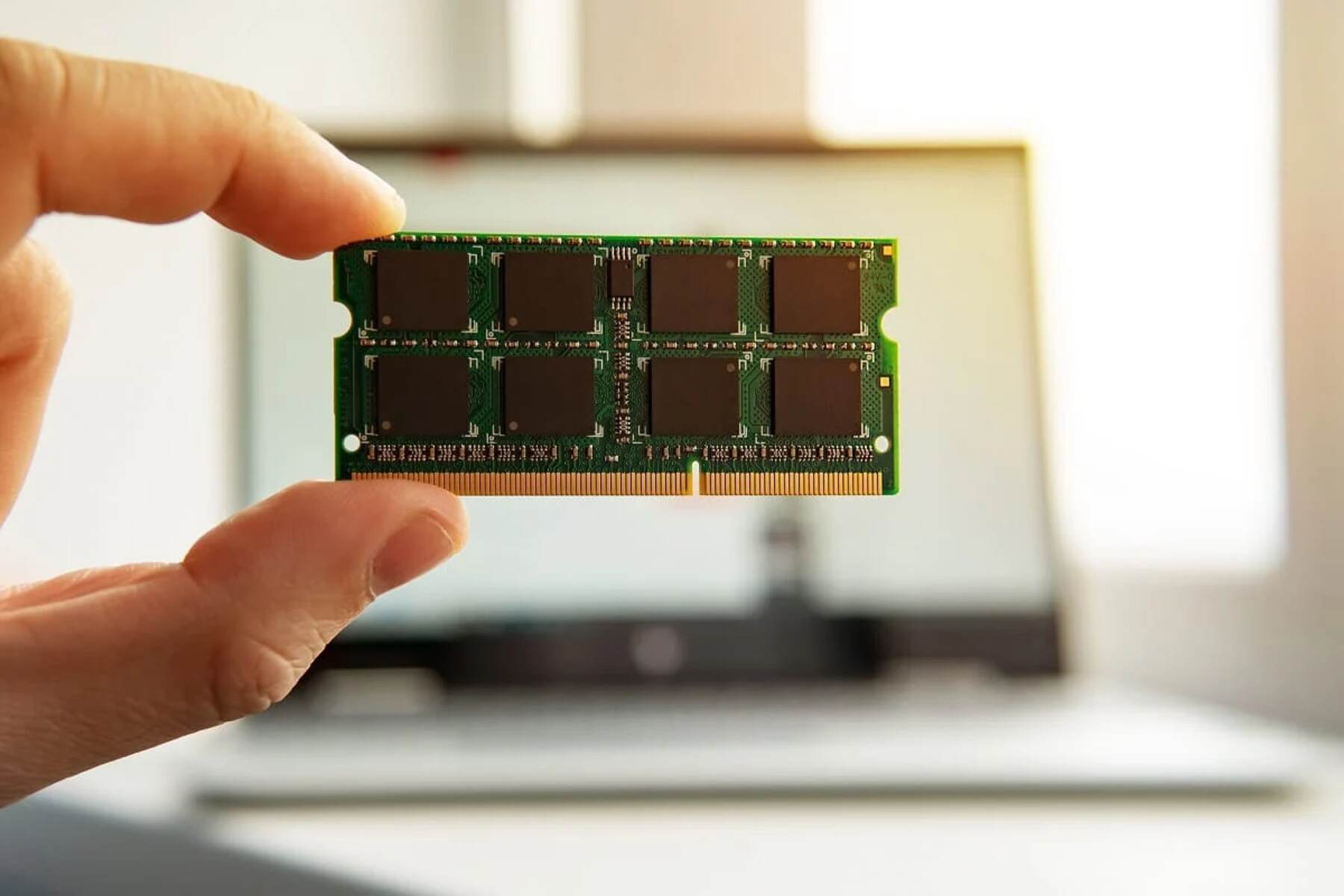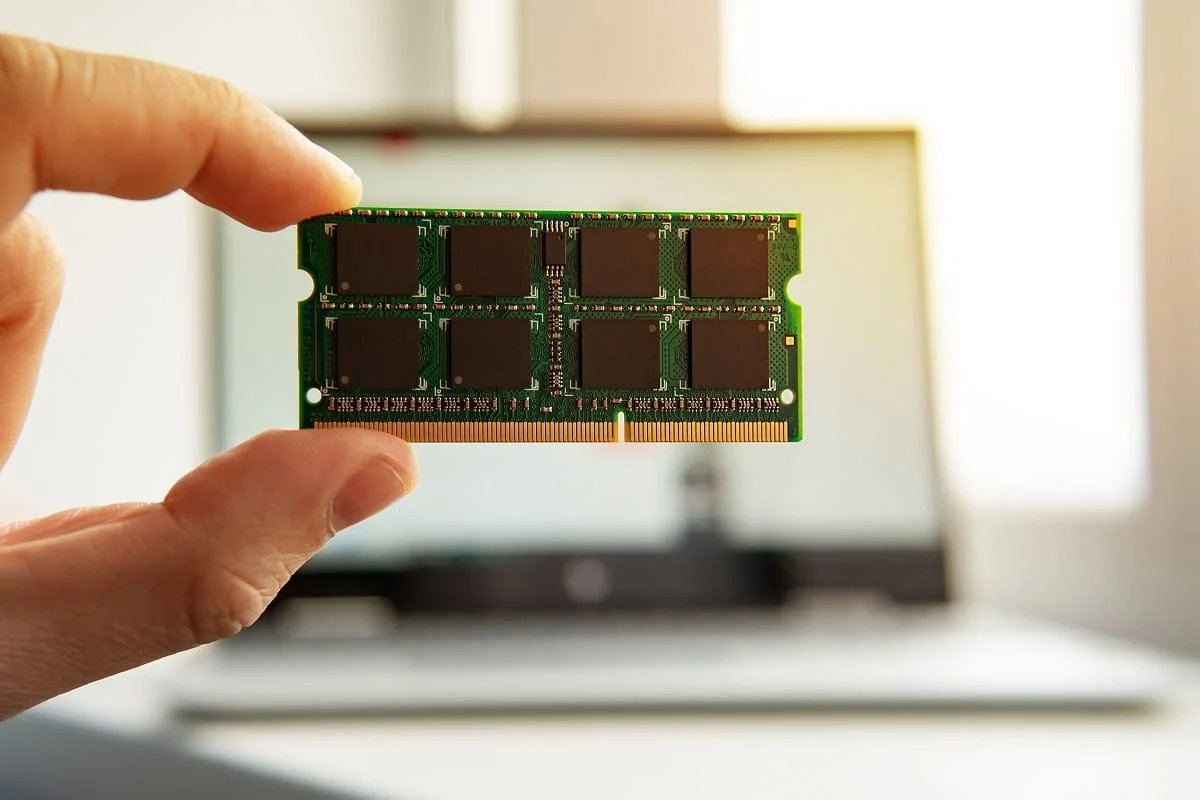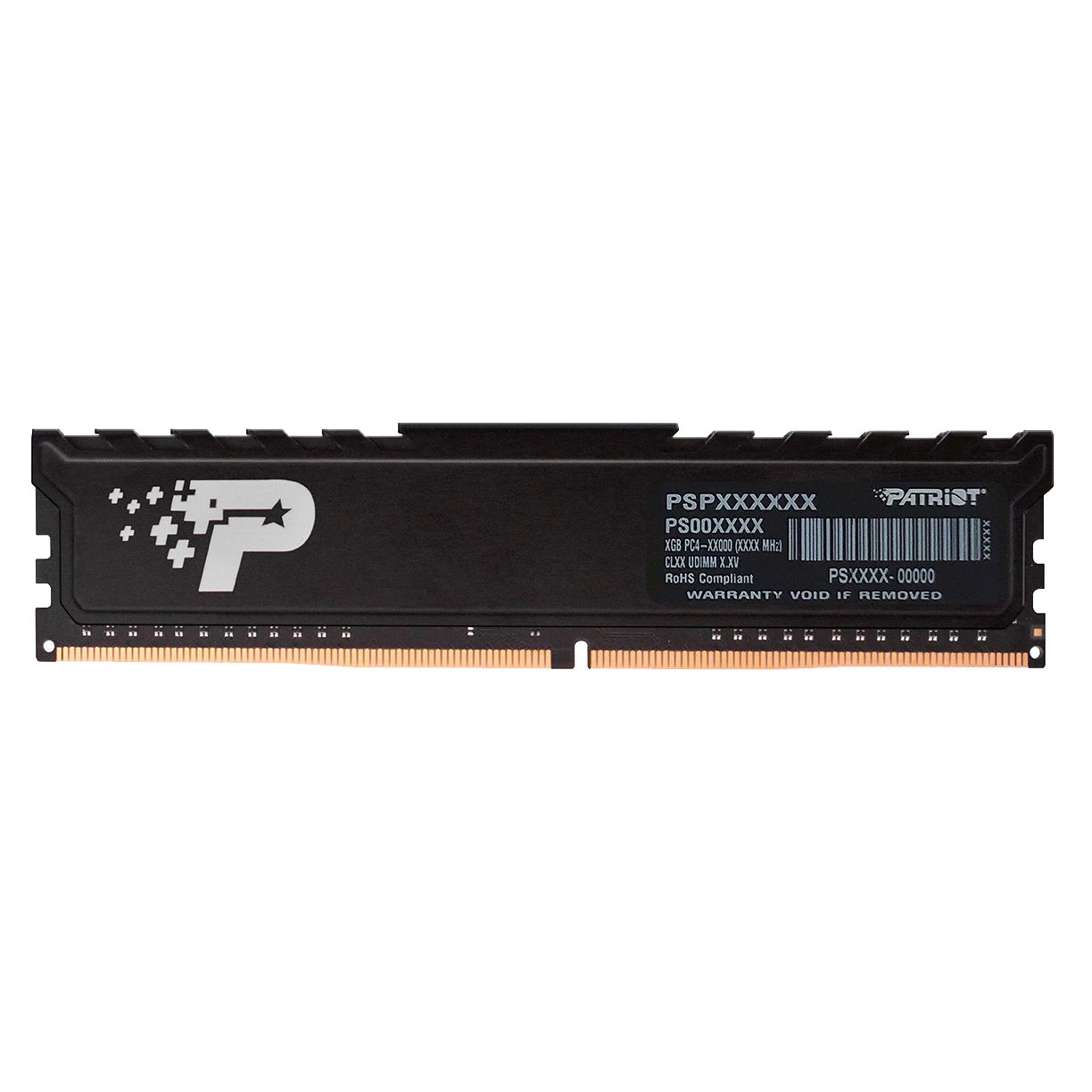Can My Windows 10 Computer Handle More RAM?
If you’re wondering whether you can add more RAM to your Windows 10 computer, the answer is most likely yes. Windows 10 is designed to handle a wide range of hardware configurations, including varying amounts of RAM. However, there are a few factors to consider before deciding to upgrade your computer’s memory.
First and foremost, you need to make sure that your computer’s motherboard supports additional RAM. Check your computer’s specifications or consult the manufacturer’s website to find out the maximum amount of RAM your system can handle. Keep in mind that some older computers may have limitations on the amount of RAM they can utilize.
Another important aspect to consider is the operating system edition installed on your computer. Windows 10 comes in different editions, such as Home and Pro, and each edition has its own RAM limitations. While Windows 10 Home supports up to 128GB of RAM, Windows 10 Pro can handle a significantly higher 2TB of RAM.
Additionally, it’s crucial to understand the difference between the 32-bit and 64-bit versions of Windows 10. The 32-bit version has a RAM limit of 4GB, which includes both physical RAM and virtual memory. In contrast, the 64-bit version allows for much more RAM, with the limit depending on the specific edition.
Once you have confirmed that your computer supports more RAM, and you know the limitations of your specific edition and version of Windows 10, you can proceed with upgrading your system. Adding more RAM to your computer can provide several benefits, such as improved multitasking capabilities, smoother performance in resource-intensive applications, and faster overall system responsiveness.
Keep in mind that upgrading RAM is typically a relatively straightforward process. However, if you’re not comfortable with performing hardware upgrades yourself, you can seek assistance from a professional technician. They can ensure that the new RAM is installed correctly and compatible with your system.
In summary, most Windows 10 computers can handle additional RAM, as long as you consider factors such as motherboard support, operating system edition, and version type. By upgrading your computer’s RAM, you can enhance its performance and optimize your overall Windows 10 experience.
How to Check Your Current RAM Usage in Windows 10
Monitoring your computer’s RAM usage is crucial when considering whether to add more RAM to your Windows 10 computer. Fortunately, Windows 10 provides built-in tools to help you check your current RAM usage and determine if an upgrade is necessary.
Here’s how you can check your current RAM usage in Windows 10:
- Open the Task Manager by right-clicking on the taskbar and selecting “Task Manager” from the context menu. You can also press the Ctrl + Shift + Esc keys simultaneously to open it directly.
- In the Task Manager window, click on the “Performance” tab.
- Under the “Performance” tab, click on “Memory”. Here, you’ll find information about your computer’s current RAM usage.
- You’ll see a bar graph that shows the “In Use” and “Available” memory. “In Use” represents the amount of RAM currently being used by running applications and processes, while “Available” signifies the amount of unused RAM.
- Below the graph, you’ll also find details about the total physical memory (RAM) installed on your computer.
By monitoring your computer’s RAM usage in the Task Manager, you can get a real-time snapshot of how much memory is being utilized by your system. This information can help you determine if your current RAM capacity is sufficient or if an upgrade is necessary to meet your computing needs.
It’s worth noting that RAM usage will vary depending on the applications and processes running on your computer. For example, if you often run memory-intensive programs, such as video editing software or virtual machines, your RAM usage may be higher compared to someone who primarily uses their computer for web browsing and document editing.
Additionally, Windows 10 also provides various performance monitoring tools, such as the Resource Monitor and the Performance Monitor, which offer more detailed insights into RAM usage and other system resources. These tools can be accessed by searching for “Resource Monitor” or “Performance Monitor” in the Windows Start menu.
In summary, checking your current RAM usage in Windows 10 is essential to evaluate if additional RAM is required. By using the Task Manager or other performance monitoring tools, you can determine how much RAM is being utilized by your system and make an informed decision about upgrading your computer’s memory.
Windows 10 Home vs. Windows 10 Pro: RAM Restrictions
When considering an upgrade to your Windows 10 computer’s RAM, it’s important to be aware of the RAM restrictions imposed by different editions of the operating system. The two most common editions of Windows 10 are Home and Pro, and they have varying limitations on the amount of RAM they can support.
Windows 10 Home is the standard edition that comes pre-installed on most consumer-grade computers. It supports a maximum of 128GB of RAM, which should be more than sufficient for the average user. This limit allows for smooth multitasking and efficient operation of resource-intensive programs.
On the other hand, Windows 10 Pro, the more advanced edition primarily designed for business and power users, offers a significant increase in RAM capacity. Unlike Windows 10 Home, Windows 10 Pro can handle up to a whopping 2TB of RAM. This high RAM limit is especially beneficial for users who work with large datasets, virtual machines, or complex professional applications.
It’s important to note that while Windows 10 Pro supports a significantly larger RAM capacity, the average user may not require that much memory in their everyday computing tasks. Unless you have specific use cases that demand massive amounts of RAM, such as running multiple virtual machines concurrently, Windows 10 Home’s RAM limit of 128GB should be more than ample for regular home and office use.
Both Windows 10 Home and Pro utilize the same 32-bit and 64-bit architecture, allowing compatibility with a wide range of hardware configurations. However, it’s important to choose the edition that meets your specific needs and takes into account any potential RAM requirements for your intended use.
Before making a decision, consider the type of applications you use and the level of multitasking you require. If you often work with memory-intensive programs or have demanding workloads, upgrading to Windows 10 Pro and taking advantage of its higher RAM limit may be beneficial. However, for most users, Windows 10 Home’s RAM capacity is more than sufficient for smooth and efficient operation.
In summary, Windows 10 Home and Windows 10 Pro have different RAM limitations, with Windows 10 Home supporting up to 128GB of RAM and Windows 10 Pro accommodating up to 2TB. Consider your specific needs and usage patterns to determine which edition and RAM capacity are the most suitable for your Windows 10 computer.
Understanding the 32-bit and 64-bit Versions of Windows 10
When it comes to choosing the appropriate version of Windows 10 for your computer, it’s important to understand the difference between the 32-bit and 64-bit versions. These terms refer to the architecture of the operating system, specifically the way the computer’s processor handles information and memory.
The main difference between the two versions lies in their ability to utilize system memory. The 32-bit version of Windows 10 can only address a maximum of 4GB of RAM. This includes both the physical RAM installed in your computer and the virtual memory reserved by the operating system. In practical terms, this means that any additional RAM beyond 4GB will not be recognized or utilized by the system.
On the other hand, the 64-bit version of Windows 10 can utilize significantly more RAM. It has a theoretical memory limit of 18.4 million TB, which is essentially beyond the realm of current technology. For practical purposes, the actual RAM limit for the 64-bit version depends on the specific edition of Windows 10 you are using.
By utilizing the 64-bit version of Windows 10, you can take full advantage of the additional memory capabilities of your computer. This can be particularly beneficial if you use memory-intensive applications or perform tasks that require a large amount of memory, such as video editing, 3D modeling, or running multiple virtual machines simultaneously.
It’s worth noting that the 32-bit version of Windows 10 is still available for compatibility reasons, as it can run on older hardware and supports legacy software that may not be compatible with the 64-bit architecture. However, for most modern computers with sufficient hardware capabilities, opting for the 64-bit version is highly recommended to maximize the benefits of increased RAM capacity.
When considering upgrading your computer’s RAM, it’s important to ensure that your Windows 10 edition matches the architecture of your processor. A 64-bit processor is required to run the 64-bit version of Windows 10 and take advantage of its capabilities.
In summary, the 32-bit version of Windows 10 has a RAM limit of 4GB, while the 64-bit version can utilize significantly more memory. If your computer has a 64-bit processor, it is highly recommended to opt for the 64-bit version of Windows 10 to make the most out of your computer’s RAM capacity.
RAM Limits for Windows 10 Versions
Windows 10 comes in various editions, each with its own limitations on the amount of RAM it can support. It’s important to be aware of these limitations when considering upgrading the RAM in your Windows 10 computer.
Here are the RAM limits for the different versions of Windows 10:
- Windows 10 Home: The Home edition of Windows 10 supports a maximum of 128GB of RAM. This limit is more than sufficient for the average user and allows for smooth multitasking and efficient operation of most applications.
- Windows 10 Pro: The Pro edition of Windows 10 has a significantly higher RAM limit of 2TB. This increased capacity is particularly beneficial for power users, professionals, and businesses that require extensive memory resources for resource-intensive applications or complex workloads.
- Windows 10 Enterprise and Education: Both Windows 10 Enterprise and Education editions also have a RAM limit of 2TB, similar to the Pro edition. These editions are primarily designed for large organizations, institutions, and educational environments that require advanced management and security features.
It’s important to note that the RAM limits mentioned above are specific to the 64-bit versions of Windows 10. The 32-bit versions, on the other hand, have a limit of 4GB, which includes both physical RAM and virtual memory.
When it comes to choosing the right Windows 10 edition for your needs, it’s crucial to consider your specific requirements and the RAM capacity required for your intended use. For most users, the RAM limit provided by Windows 10 Home’s 128GB should be more than sufficient. However, power users and professionals who heavily rely on memory-intensive applications may benefit from the increased RAM capacity offered by Windows 10 Pro, Enterprise, or Education editions.
Before upgrading the RAM in your computer, it’s essential to ensure that your hardware supports the intended RAM capacity and that you have the corresponding version of Windows 10 installed. It’s also worth noting that the RAM limit mentioned here is for the specific editions mentioned, and other editions, such as Windows 10 Pro for Workstations, may have different RAM limitations.
In summary, the RAM limits for Windows 10 versions vary, with Windows 10 Home supporting up to 128GB, and Windows 10 Pro, Enterprise, and Education editions accommodating up to 2TB of RAM. Understanding these limits can help you make an informed decision when upgrading the RAM in your Windows 10 computer.
Factors to Consider When Adding More RAM to Your Windows 10 Computer
Adding more RAM to your Windows 10 computer can greatly improve its performance and multitasking capabilities. However, before making the decision to upgrade your RAM, there are several factors you should consider to ensure a smooth and successful upgrade process.
Here are some important factors to keep in mind:
- System Compatibility: Check your computer’s specifications and ensure that it can support the desired amount of RAM. Verify the maximum RAM capacity supported by your motherboard and the type of RAM (DDR3, DDR4, etc.) that is compatible with your system.
- Operating System Edition: As mentioned earlier, different editions of Windows 10 have varying RAM limitations. Make sure that the edition and version of Windows 10 installed on your computer can effectively utilize the additional RAM you plan to add.
- Current RAM Usage: Assess your current RAM usage by monitoring it through the Task Manager or other system monitoring tools. Determine if you frequently approach or exceed your current RAM capacity, as this indicates the need for additional memory.
- Intended Use: Consider the primary purpose of your computer and the applications you regularly use. If you engage in memory-intensive tasks such as video editing, gaming, or running virtual machines, you may benefit from a higher RAM capacity.
- Budget: Evaluate your budget and determine how much you are willing to invest in upgrading your RAM. RAM prices can vary depending on the type, speed, and capacity, so it’s important to strike a balance between your needs and your budget.
- Future Upgrade Potential: Think about your future needs and the potential for further upgrades. If you anticipate requiring more memory in the future, consider purchasing RAM modules that provide room for expansion, such as leaving available RAM slots or selecting larger capacity modules.
Once you have considered these factors and determined that upgrading your RAM is necessary and feasible, you can proceed with the actual upgrade process. Take proper precautions, such as grounding yourself to avoid static discharge, and follow the manufacturer’s instructions for installing the new RAM modules.
It’s also important to ensure that the new RAM modules are compatible with your existing ones. Mixing different types or speeds of RAM can lead to compatibility issues and hinder performance. If possible, try to match the specifications of your existing RAM to maintain optimal compatibility.
In summary, before adding more RAM to your Windows 10 computer, consider factors such as system compatibility, operating system edition, current RAM usage, intended use, budget, and future upgrade potential. Carefully evaluating these aspects will help you make an informed decision and ensure a successful RAM upgrade that enhances your computer’s performance.
Upgrading RAM in Your Windows 10 Computer
If you’ve decided to upgrade the RAM in your Windows 10 computer, it’s important to follow the proper steps to ensure a successful installation. Adding more RAM can significantly improve your computer’s performance and multitasking capabilities, allowing for smoother operation of applications and faster response times.
Here are the steps to upgrade the RAM in your Windows 10 computer:
- Research and Purchase: Determine the type and capacity of RAM that is compatible with your computer’s motherboard. Ensure that you purchase RAM modules that match the specifications of the existing RAM to maintain optimal compatibility. You can buy the RAM modules from reputable retailers or online vendors.
- Prepare your Workspace: Before opening your computer, ensure that you have a clean and well-lit workspace. Ground yourself by touching a grounded object or wearing an anti-static wristband to prevent static discharge from damaging the sensitive electronic components.
- Power Off and Disconnect: Shut down your computer and unplug it from the power source. This step is necessary to avoid any electrical mishaps during the installation process.
- Open the Computer: Open your computer case by removing the side panel. Consult your computer’s manual or search online for specific instructions on how to access the RAM slots. Different computer models may have varying methods of accessing the RAM slots.
- Insert the RAM Modules: Locate the existing RAM slots on your motherboard. Gently press down on the plastic clips at the ends of the slot to release the existing RAM modules. Remove them and align the new RAM modules with the slots. Slide them into place, ensuring that the module’s pins are fully inserted and the clips lock securely.
- Close the Computer: Once the new RAM modules are securely in place, close the computer case by reattaching the side panel. Ensure that all screws or clips are tightly secured to prevent any loose connections.
- Power On and Verify: Plug in your computer and power it on. Windows 10 should automatically recognize the new RAM and adjust its settings accordingly. To confirm that the installation was successful, you can go to the Task Manager and check the “Performance” tab to verify the new RAM capacity.
It’s important to note that upgrading your computer’s RAM may void any warranties or support agreements you have with the manufacturer. If you’re unsure about performing the upgrade yourself, consider seeking assistance from a professional technician who can ensure a smooth and proper installation.
In summary, upgrading the RAM in your Windows 10 computer involves researching and purchasing compatible RAM modules, preparing your workspace, opening the computer case, inserting the new RAM modules, closing the computer, and verifying the installation was successful. By following these steps, you can enhance your computer’s performance and enjoy the benefits of increased RAM capacity.
Benefits of Upgrading RAM in Windows 10
Upgrading the RAM in your Windows 10 computer can bring several significant benefits that enhance your overall computing experience. By increasing the amount of available memory, you can improve your computer’s performance and unlock various advantages that positively impact your day-to-day usage.
Here are the key benefits of upgrading the RAM in your Windows 10 computer:
- Improved Multitasking: Upgrading your RAM allows your computer to handle multiple tasks simultaneously with ease. You can run several applications and programs at the same time without experiencing slowdowns or performance issues. This is especially beneficial for professionals, gamers, and creative individuals who frequently work with resource-intensive software.
- Enhanced Application Performance: More RAM ensures that your applications have ample memory resources to operate efficiently. Programs will load faster, perform smoother, and respond quicker, providing a seamless user experience. This is particularly noticeable when working with software that requires substantial memory, such as video editing, 3D rendering, or running virtual machines.
- Reduced Page File Usage: When your computer runs out of physical RAM, it compensates by using a portion of the hard drive as virtual memory, referred to as the page file. This can significantly slow down your system. By upgrading your RAM, you reduce the reliance on the page file, leading to improved overall performance and faster access to data.
- Improved Gaming Experience: Gamers can benefit greatly from upgrading RAM. More memory allows for smoother gameplay, faster loading times, and better overall performance in graphics-intensive games. It also provides headroom for running background processes, such as voice chat applications or streaming software, without impacting game performance.
- Better System Responsiveness: Additional RAM enhances the overall responsiveness and snappiness of your Windows 10 computer. Tasks such as booting up the system, launching applications, and accessing files become faster and more efficient.
- Future-Proofing: As newer applications and operating systems evolve and demand greater resources, having more RAM ensures that your computer can handle the latest software updates without experiencing performance bottlenecks. Upgrading your RAM capacity now can help future-proof your system and extend its usable lifespan.
It’s important to consider these benefits in conjunction with your own specific needs and usage patterns. If your computer frequently struggles with slow performance, freezes, or lag while running multiple programs, upgrading your RAM can provide a noticeable improvement.
In summary, upgrading the RAM in your Windows 10 computer offers several advantages, including improved multitasking capabilities, enhanced application performance, reduced reliance on the page file, better gaming experience, increased system responsiveness, and future-proofing your computer. By investing in more memory, you can optimize your Windows 10 experience and ensure your computer meets the demands of modern computing tasks.

























